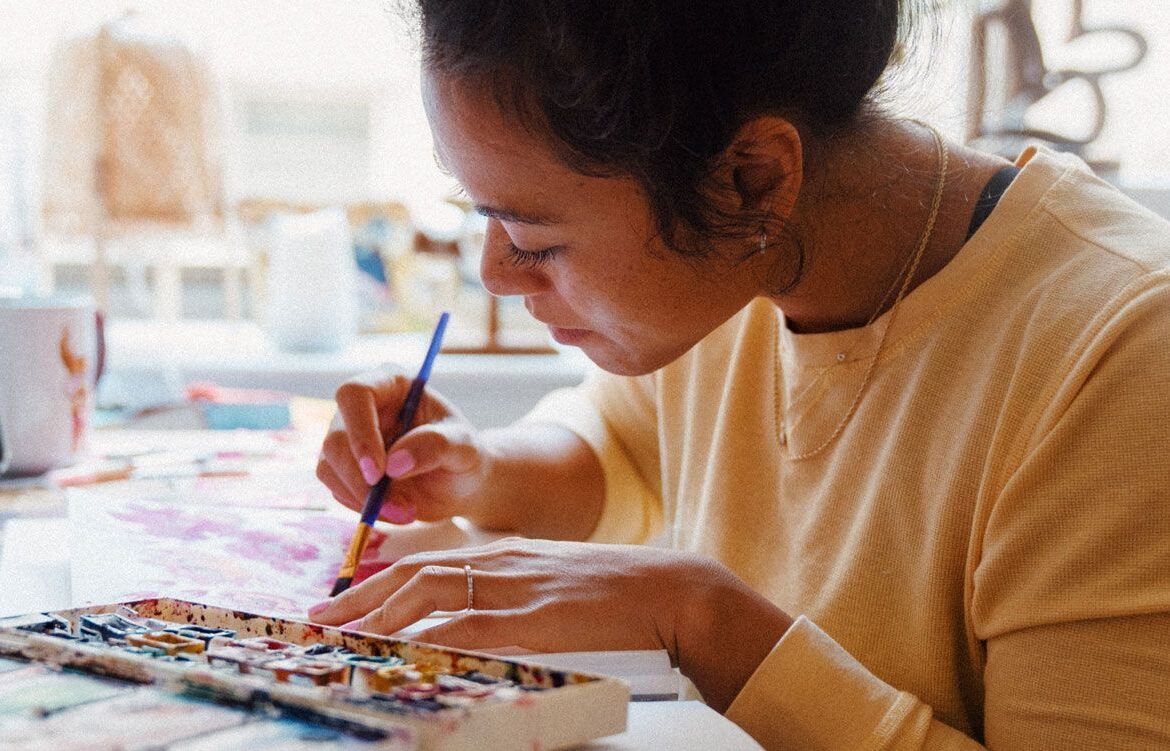What’s the relationship between rest and creativity, and how can moments of inactivity boost our productivity? Here, creatives explain how rest inspires their work as artists, and why slowing down has such a key part to play
Some of the most creative people in history have linked their artistic success to moments of idleness. Mozart, for example, once described how he would imagine new melodies while he was eating in a restaurant, walking home after a meal, or getting ready for bed.
Like an unexpected spark of light, there’s often no telling when a sudden burst of inspiration will come, stopping us in our tracks with a bright new idea, thought, or realisation. Creativity, in fact, is both a mysterious and magical feat.
In an article in The New York Times, essayist and cartoonist Tim Kreider draws on the intrinsic relationship between rest and creativity: “Idleness is not just a vacation, an indulgence, or a vice. It is as indispensable to the brain as vitamin D is to the body.
“The space and quiet that idleness provides is a necessary condition for standing back from life and seeing it whole, for making unexpected connections, and waiting for the wild summer lightning strikes of inspiration,” he writes.
It is, Kreider concludes, paradoxically, necessary to getting any work done.
Creativity in full bloom
When lockdown began in March 2020, many people across the UK experienced increased downtime, and a marked slowdown in their pace of life. With this, many also embraced lockdown as an opportunity to learn something new.
A survey of 1,000 women in Britain, conducted by online florist Serenata Flowers, found that half its participants took up a new hobby during the pandemic, with 67% practising their new skills at least once a week, and learning a new skill, or taking up a hobby, even came highly recommended by Public Health England as a means of managing mental health.
There’s some fascinating science behind this, too. A study exploring the concept of ‘mind wandering’, by the University of York and the University of California, indicated that more than 40% of creative ideas arise during breaks and downtime – when our minds are free to rest and wander.
The research suggested that the parts of the human brain which drive creativity are most active when we don’t have to focus, with moments of creativity and innovation taking place when we’re at rest.
Creativity, therefore, whether existing as an expression, enterprise, remedy (or all of the above), arguably cannot exist in full bloom without a level of rest and idleness.
The beauty of procrastination
Judith Achumba-Wöllenstein is the co-founder and creative director of fashion psychology magazine, Hajinsky.
Drawing on her background in cognitive psychology, Judith explains that during moments when our minds are unfocused, or when we’re doing something repetitive, such as washing the dishes or listening to a podcast, we access parts of our brain that are much more complex.
This is when our minds are able to gather information and create new solutions, she says.
“I’ve always loved to run, so I often think of solutions while I’m out running,” says Judith.
“At times, I’m a procrastinator, but often, it’s in those moments of procrastination that I find the answers to a problem that I’ve been staying up all night to solve.”
Exploring the close connection between rest and creativity, Judith notes: “Rest often involves a clearing up process of our inner world. A lot of the time, the work we do isn’t the kind that anybody can see. It’s the internal work of building on our relationships and identities.
“When we neglect to take care of our inner world, it can hold us back in our creative process,” Judith says.
Rest comes in various shapes and sizes for different people at different times, she adds.
For her, it doesn’t always take the traditional form of sitting down and putting her feet up, but it can look like pursuing a new project, working wholeheartedly on something she’s passionate about, or spending time in the community.
The value of margin
“I think of rest as the margins around the page of a book I’m reading,” explains poet, producer, and musician, Joshua Luke Smith.
The words matter but without the margins, they run into each other and are senseless, he says.
Joshua continues: “When I rest, I create order and context around everything I do. I don’t rest as a reward, but to return to the original expression of human design. I am a being, not a doing.”
Describing the rhythms of rest in his daily life, Joshua says: “Each morning, I wake up before my wife and daughter, simply to be in silence.
“There’s a phrase I’ve seen bandied around, particularly among young entrepreneurs, that says ‘Never not working’. It sounds admirable and dedicated, but I think it would be the last thing any of us would want our friends and family to say of us when we’re gone,” he notes.
“The question ‘How do I want those I love most to remember me?’ is the compass that leads me away from being busy and burning out,” he says.
Ultimately, he concludes, it’s a man who was present, available, grateful, and loving.
The ebb and flow of creating
Multidisciplinary visual artist, Lois Seco, creates from the philosophical belief that art connects us to something bigger than ourselves.
While her experience of rest has greatly changed since becoming a mother, Lois feels most at peace when she’s creating.
“When I practise line drawing, play around with colours, or experiment with art, there’s a real sense of peace, calm, and wholeness within me,” she says.
For her, creative ideas freely spring to mind during the idle and autopilot moments of her day, such as when she’s driving or lying down in bed.
“Rest is the action of gaining more energy and feeling complete,” she says.
Speaking of how rest informs her work as an artist, Lois reveals: “If rest wasn’t part of the ebb and flow of my life, I’d find it really hard to create.”
Seeking and finding beauty in the world around her, Lois looks out for unique colour palettes, rock formations, and fascinating landscapes while she’s walking.
“This is the rest that directly affects my work,” she recalls.
Sharing a warm word of wisdom for anyone struggling with burnout, Lois suggests: “Why not make a mental or physical list of all the things that make you feel alive, that you can practically blend into your week?”
She recommends jotting down a list of actions following the statement ‘I feel most rested when…’ Then, even if it’s for only five minutes a day, make a habit of prioritising those things.
To connect with a life coach and learn more about how creativity can boost your wellbeing visit lifecoach-directory.org.uk

